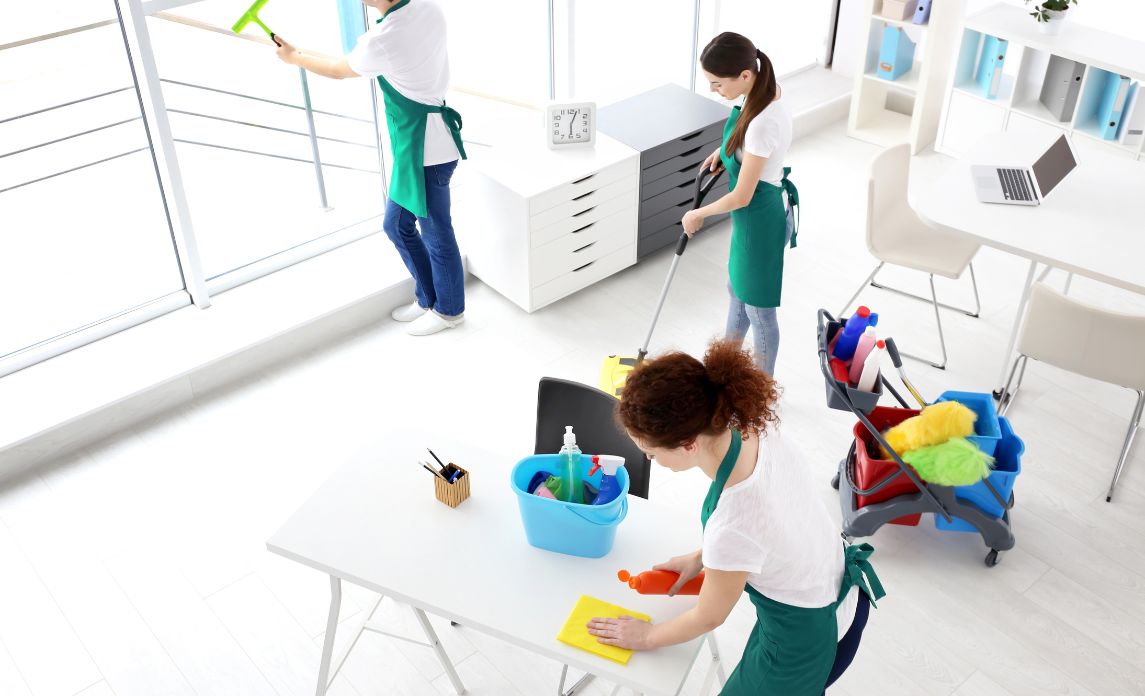Keeping communal areas can be challenging, especially because of the high foot traffic at all hours. Then, you also have different people with different habits sharing the space. You’re lucky if you have a group in which everyone’s conscientious about tidiness and organisation; unfortunately, this isn’t always the case.
At the end of the day, however, no matter how challenging it may be, the job has to be done. Below are some tips and things to consider when cleaning communal areas:
Communal Areas You Need to Keep Clean
The best and easiest way to maintain cleanliness in communal areas is, of course, to hire professional cleaners to do the job for you. This way, everything will be taken care of in the most efficient manner.
That being said, even if you’re working with a cleaning company, you still need to be familiar with every communal area that needs cleaning. Some are quite obvious, but there are some that might escape your notice. Here’s a quick list of spaces you need to pay attention to:
- meeting rooms
- cafeterias dining areas, pantries, and kitchens
- lounge areas and lobbies (including the reception area)
- bathrooms
- lifts and stairs
- hallways
- parking areas or garages
- gardens
- entrances and exits
As you can see, communal spaces aren’t just the actual rooms; they also include areas that lead to such rooms, as well as outdoor locations where people gather.
Things to Remember for Cleaning Communal Areas
Once you’ve cataloged all communal areas in your establishment, keeping them clean will be much easier. Here are some things you can implement immediately to improve your cleaning processes:
1. Prepare an Inspection Schedule
Because there are so many spaces you need to keep track of, it can be easy to leave out certain spots or items that need cleaning and disinfection. To prevent this kind of slip-up, draw up an inspection schedule per communal area. Some might need more frequent checks, like dining spaces or bathrooms, while others can be visited once or twice a day depending on the usage. For example, if a meeting room isn’t used for the day, you can simply visit it at the end of office hours to have it dusted.
2. Prepare a Detailed Cleaning Schedule (and Review It Periodically)
Once you have an inspection schedule, use this as a basis to develop a detailed cleaning schedule. Make sure to coordinate with your chosen professional cleaners, so you can agree on what needs to be done, when, and how often.
Do note that there are plenty of tasks that need to be performed more than others or even on an as-needed basis. For example, during peak hours, you may need to conduct more frequent disinfection of lifts and stairway landings. Meanwhile, bathrooms may need to be inspected and cleaned every couple of hours, depending on usage.
You also need to review and revise your cleaning schedule every so often. When something changes, say a new tenant moves into your office building, you may need to adjust the frequency of certain tasks.
3. Itemise Everything You Need to Clean
There are plenty of small things and details that can affect the cleanliness of a communal space. A clean stairwell can still feel gloomy if the light fixtures have a thin film of cobwebs, or if the windows are covered in grime. A bathroom might still smell unpleasant after being disinfected because the trash bins aren’t emptied.
This emphasises the importance of itemising everything that needs to be cleaned in a certain space. Don’t forget to include the following:
- handholds or handrails
- windows and window frames
- lightbulbs and lighting fixtures
- surfaces like tables and countertops
- bathroom hardware, such as faucet handles
- bathroom mirrors
- drains
4. Keep a Record or Checklist
To keep track of which cleaning tasks have been carried out, it’s a good idea to have a record for each communal space. This is particularly helpful for areas like the bathroom, which can have a long list of tasks that include cleaning and disinfecting the toilets, mopping the floors, as well as replenishing hygiene items like toilet paper and hand soap.
With a record or checklist of tasks, you can easily monitor which cleaning tasks have been done and what still needs to be done for the rest of the day.
5. Assign Tasks to Occupants
Last but certainly not least, keeping communal spaces clean becomes easier if everyone is involved. Obviously, a large chunk of the job falls upon the professional cleaners you’ve hired. However, every stakeholder needs to contribute as well. You can help encourage such behavior by implementing simple cleanliness rules, like CLAYGO (clean as you go) and waste segregation.
The bottom line here is that everyone who uses a space has a responsibility to keep it clean. It’s not just common courtesy, but also for everyone’s own health and safety.
Keeping communal areas clean and hygienic can be troublesome at times, but these tips should help you get a handle on the task. The most important thing is consistency so that you can maintain reasonable cleanliness at all times.


